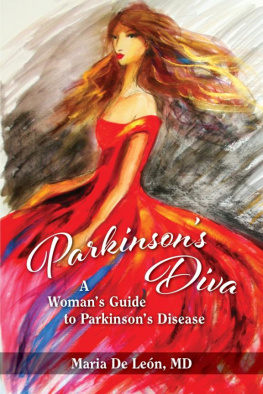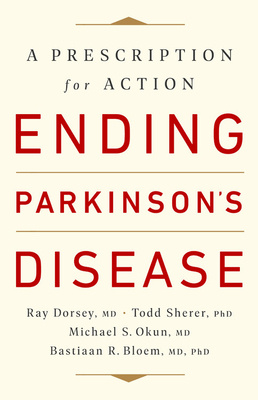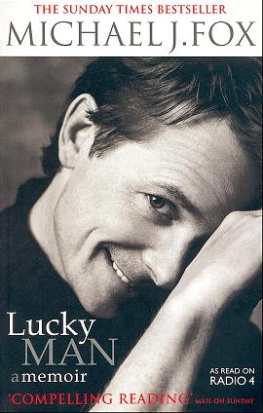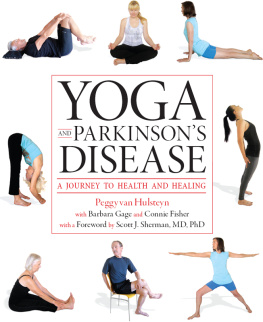Additional Praise for Life in the Balance
[S]ound advice for all seriously ill people: Live with grace; be honest with yourself; unburden yourself of anger; exercise; read the paper; and, if it suits you, reaffirm your faith in God.
Barron H. Lerner, The Los Angeles Times
I was blown away... An eye-opening read... A remarkable book.
Dr. Timothy Johnson, ABC News Medical Correspondent
[We] need the perspectives... in books like this, since our ability to evaluate the choices that patients and families make may be limited by our lack of experience.
New England Journal of Medicine
He recounts his daily struggle to live a dignified life... A very moving book.
Leonard Lopate, WNYC
In this stirring and chilling memoir, [Graboys] takes an unblinking look at himself as his mind and body suffer unrelenting hits from those progressive illnesses. An unforgettable doctor-as-patient account, including reflections by Graboys daughters, sons-in-law, and members of the families blended by his marriage.
Booklist
Tom Graboys was my student over many years. With Life in the Balance, he has become my teacher. This book is brimming with unflinchingly honest insights on how to confront a devastating illness. Each of us can learn much from this poignant memoir.
Bernard Lown, Founder of Lown Group,
Emeritus Professor Harvard,
Recipient of Nobel Peace Prize 1985
[G]ripping... A must-read for anyone with a degenerative or dementing conditionand for any couple grappling with serious illness.
Judy Foreman, nationally syndicated health columnist
A powerful story of Parkinsons, from the inside out.
Tom Ashbrook, host of NPRs On Point
Life in the Balance is Graboys heartbreaking account of his ongoing battle with Parkinsons. It is the story of a doctor turned patient, of unrelenting challenges and even more unrelenting strength; a story that is at once sad, honest and poignant, but ultimatelyand against all oddshopeful.
Parade Magazine
[A] profoundly moving experience. Physicians like Tom Graboys are rare, to be cherished and celebrated.
Dr. David Greer,
Dean Emeritus Brown University Medical School
This well-written memoir of a life shattered by Parkinsons disease will give readers, patients, and their caretakers an honest account of life with the disease.
Library Journal
Life in the Balance

A Physicians Memoir of Life, Love,
and Loss with Parkinsons Disease
and Dementia
T HOMAS G RABOYS , MD,
with P ETER Z HEUTLIN

New york / London
www.sterlingpublishing.com
STERLING and the distinctive Sterling logo are
registered trademarks of Sterling Publishing Co., Inc.
Library of Congress Cataloging-in-Publication Data Available
10 9 8 7 6 5 4 3 2 1
Published by Sterling Publishing Co., Inc.
387 Park Avenue South, New York, NY 10016
2008 by Thomas Graboys and Peter Zheutlin
Distributed in Canada by Sterling Publishing
c/o Canadian Manda Group, 165 Dufferin Street
Toronto, Ontario, Canada M6K 3H6
Distributed in the United Kingdom by GMC Distribution Services
Castle Place, 166 High Street, Lewes, East Sussex, England BN7 1XU
Distributed in Australia by Capricorn Link (Australia) Pty. Ltd.
P.O. Box 704, Windsor, NSW 2756, Australia
Book design and layout: Oxygen Design
Manufactured in the United States of America
All rights reserved
Sterling ISBN 978-1-4027-5341-1 (hardcover)
Sterling ISBN 978-1-4027-6873-6 (paperback)
For information about custom editions, special sales, premium and corporate purchases, please contact Sterling Special Sales Department at 800-805-5489 or specialsales@sterlingpublishing.com.
Dedication

This book is dedicated to
my wife, Vicki Tenney Graboys,
to my two indefatigable daughters,
Penelope and Sarah,
and to the memory of
Caroline Rigby Graboys
Never deny a diagnosis, but do deny
the negative verdict that may go with it.
Norman Cousins
Contents
The events described in this book are based on memories of Dr. Graboys as recounted by him during and after the onset of his illness. Others, including colleagues, may recall these events differently.
TO THE THOUSANDS OF PATIENTS who came under Tom Graboyss care over the more than three decades of his cardiology practice, Tom was much more than a doctor; he was a trusted adviser, a confidant, and a friend. Rare was the patient who left his office not feeling better than when they came in, for Tom had a way of infusing hope and optimism about the future and easing the emotional burdens of illness. He used words with care. He reassured. He allayed anxiety. He listened attentively. He gave every patient his home phone number, and many used it.
I first met Tom in 1985, when I went to work for an organization cofounded by his mentor, Bernard Lown, called the International Physicians for the Prevention of Nuclear War (IPPNW), winner of the 1985 Nobel Peace Prize. Tom was active in both IPPNW and its U.S. affiliate, Physicians for Social Responsibility. It was hard not to be in awe of this very handsome, brilliant doctor with a strong social conscience.
In the 1990s, my father, a physician himself, had heart problems and was about to undergo a second angioplasty when I urged him to travel from New Jersey to see Tom for a second opinion. My father never had that second angioplasty; indeed, he might not have had the first had he seen Tom from the outset. Tom assured my father that his condition was eminently manageable without surgery, and that lifted an enormous burden of worry from my fathers shoulders. From his first visit, and after every annual visit that followed, my father would remark to me that Tom was everything a fine physician should be. My father would know: He was a deeply beloved pediatrician with an extraordinary gift for endearing himself to children and allaying the anxieties of their parents with his quiet, unassuming, deeply human touch. He and Tom were cut from the same cloth.
In 1998, I accepted a position as Executive Director of the Lown Cardiovascular Research Foundation, associated with the Lown Cardiovascular Group, of which Tom was the director. There I saw for myself what an extraordinary physician he was, and how profoundly gifted in the art of interpersonal communication. Both before and after undertaking this book with him, I spoke with dozens of his patients, and I read the hundreds of deeply moving, heart-rending letters patients wrote to him when Parkinsons and the dementia associated with his Parkinsons forced his premature retirement from medicine.
Even in Boston, a city renowned for its legions of exceptionally skilled clinicians, Tom stood out. His clinical judgment was impeccable, his opinions valued by colleagues and patients, his meticulousness unparalleled. But what truly set Tom apart was his uncommon humanity, his intense concern for what ailed the hearts and the souls of his patients, and his unstinting generosity with his time. Despite the crushing workload he carried on his shoulders, no patient was ever rushed and no patient concern was ever belittled. A patients annual follow-up with Tom always ran for an hour or so, unheard of in this era of managed care. After each examination, Tom would sit, knee to knee with the patient, on a small sofa in his office and talk. He never interposed his desk. He treated you as his equal. He was a full partner in your care, and you were glad to have him in your corner. A lot of doctors talk about the importance of the human connection between doctor and patient, but Tom walked the walk.
Next page










